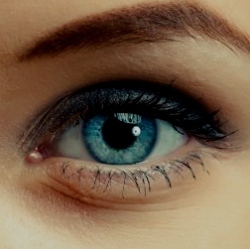
A team of researchers is hoping to use virtual reality technology to diagnose social anxiety disorder. “Most of the work done with VR so far (including from our workgroup) was done either as a treatment for anxiety disorders or as a method to investigate mechanisms behind exposure therapy.
This is one of the first studies that used VR as a possible diagnostic tool (in this case for social fear),” explained study author Youssef Shiban of the University of Regensburg.
“Once validated in other studies, this could open new doors for us as therapists and researchers, as we can use behavioral and psychophysiological data to better diagnose. This is extremely useful as most diagnoses are conducted per conversation and are based on subjective input from the patient that could be biased for various reasons.”
The researchers found that they could distinguish between low- and high-social-anxious participants by using VR technology to monitor how long people looked at faces in a virtual social situation.
The study of 19 low- and 18 high-socially-anxious participants used two different virtual social environments. One environment involved the participant obtaining a train ticket. The second virtually recreated the waiting room of a doctor’s office.
The researchers monitored the participants’ eye movements and skin conductance while they navigated the virtual worlds, but only observed a higher skin conductance response in high-anxious participants in the train scenario. However, they observed that in both virtual environments the high-anxious group concentrated their gaze for a significantly shorter time on the faces of the avatars.
“If you had to choose between skin conductance and eye tracking to differentiate between socially fearful participants and someone with less social fear, go with eye tracking,” Shiban told PsyPost.
Previous research has found that anxious individuals are quick to gaze at potentially threatening stimuli but subsequently avert their eyes, which serves as a defensive reaction to reduce anxiety.
Though the initial results are promising, more research is needed.
“This line of research is still in its infancy, there is a lot of work to do before you can diagnose someone using virtual reality,” Shiban said. “We still need to test and validate this in more studies and with pathological groups and validate it using clinical interviews. Give us time.”
The study, “Potential Of Virtual Reality As A Diagnostic Tool For Social Anxiety: A Pilot Study“, was also co-authored by Martin Dechant, Sabine Trimpl, Christian Wolff, Andreas Mühlberger.
